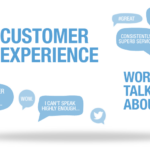The modern consumer: employee of the company looking for consumer experiences (by Romina Giovannoli)

With the advent of the web, digital media and technological interfaces, the relationship between businesses and consumers has changed. Today, the consumer who talks about and with the brand in digital environments has become a “prosumer”, that is, he has reached an active role in the production of contents and goods which he will enjoy.
Web 2.0 has put brand and consumer on the same level in which the brand abandons the techniques of propaganda for those of dialogue and the consumer expresses suggestions and wishes explicitly in the digital places that the brand has made available (for example Facebook fanpage or brand community). So for the brand it becomes important in digital places, as Federico Capeci, CEO Kanter Insights Division says, to adopt STYLE 2.0:
- S – Sociality: must create and favor aggregations around a passion, an interest or even the product itself.
- T – Transparency: it must not make propaganda but dialogue, making its objectives evident, admitting mistakes if necessary and accepting, even proposing, the true exchange.
- I – Immediacy: it must propose concrete, visible and extraordinarily current projects; but not only that, it must react quickly to every hint of disappointment from the consumer.
- L – Freedom: it does not force loyalty, it does not ask for long-term promises, but accepts the judgment on the field and gains trust day after day, accepting temporary escapes, setting the goal of regaining one's "collaborator".
- E – Experience: the brand that is a seller (seller) can become a publisher (publisher), offering, in digital environments and outside, emotions, games, content and entertainment in a personalized way, where even the act of choosing and consuming must become for the consumer a moment of total immersion in the brand and participation system.
This new interactive dynamic between company and consumer lays the foundations of the Economy of Experience which places the relationship between company (experience stager) and customer (guest) at the center of the whole relationship. By becoming an experience stager, a brand and a company respond to an implicit need (often not so much) of people. This makes experiential marketing affirm: not only is the product sold, but also the resulting experience. Therefore, in an increasingly saturated market, where the products are increasingly similar and the consumer increasingly evolved and less loyal to the brand, the company must shift the consumer's attention to the consumer experience. She has to become a provider of emotions and experiences as Pine and Gilmore say she has to become a real "director of experiences". So it becomes very important to customize the offer and establish a relationship with the customer who not only buys the product but also the experience he can gain from it.
It should be borne in mind that the consumer is not only rational in purchasing choices but also motivated by emotional factors that push them to look for purchasing experiences that are engaging and pleasant; so he is not only interested in maximizing purchasing utility, but in satisfying his needs and desires. The customer continually seeks shopping experiences that involve him and make him the protagonist of the choice he has made. Experience is always in the foreground to the point of having a food experience when you go to a restaurant and enjoy the service of good food; a wine experience when you enjoy a good glass of wine, a travel experience when you take a pleasant trip; a driving experience when driving a high-performance car enriched by some prestigious additional services offered by the dealer; list that could go on and on.
For all these reasons, the brand and the company must move from a state of product-mindset and from the relative product-centric vision (product space) to the experience space, a symbolic space where people participate in the design of the experiences they will experience as consumers. Each experience space can be seen as a node of a network made up of non-linear or sequential interactions between companies and brands that makes the market an experience environment that allows each person to act and implement a unique, personalized, unrepeatable interaction when call to co-create your own experience.
It should also be noted that the spread of mobility technologies has led to the development of the shared experience, i.e. the ability of consumers to share their emotions and sensations, in a word, experiences, giving rise to processes of social comparison that feed the value of a brand.
As Rose and Johson say: “It's not just how consumers are changing – researching, browsing, buying. It is also what they value the most. This is also changing. And you know what? It is no longer your product. They value experiences. If you don't offer engaging, differentiating experiences, your current customers will search, look, buy and build loyalty elsewhere. "
Today, companies that manage to organize the best experiences that guarantee the consumer's mind and heart lead the competitive arena.
Romina Giovannoli

Thanks to our Telegram channel you can stay updated on the publication of new articles of Economic Scenarios.
The article The modern consumer: collaborator of the company looking for consumer experiences (by Romina Giovannoli) comes from ScenariEconomici.it .
This is a machine translation of a post published on Scenari Economici at the URL https://scenarieconomici.it/il-consumatore-moderno-collaboratore-dellazienda-che-cerca-esperienze-di-consumo-di-romina-giovannoli/ on Wed, 21 Oct 2020 17:20:13 +0000.

